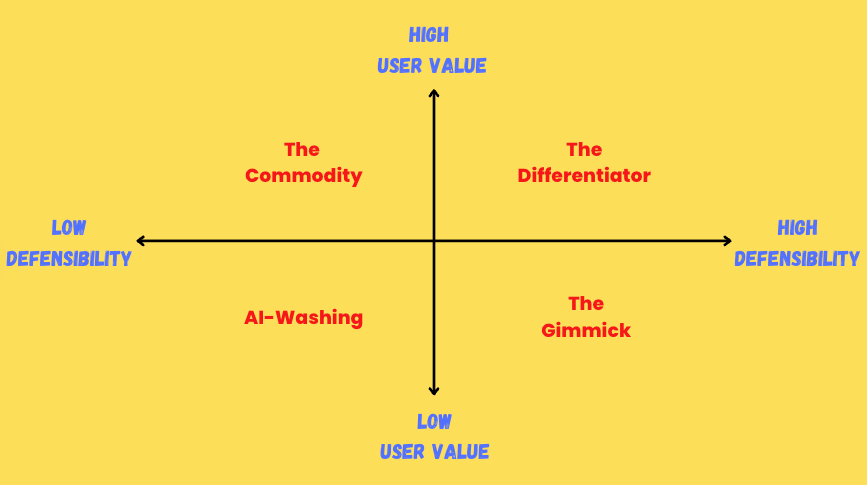Beyond "AI Product Managers" - How Proper PMs Can Start Thinking About AI Product Strategy
If you're not tired of the AI hype yet then you aren't following the right people on social media
Before we get started, my friend and former podcast guest Martin Eriksson is going to be running a “Strategy and Principles” Live Workshop in London, UK, in December, 2025. Check it out if you want to go deep on the Decision Stack and make better decisions faster (and use code JASONKNIGHT for £100 off!)
As part of my job, I speak to a lot of product people as well as startup and scale-up leaders. Now, if you follow a certain set of accounts on social media, you may think that everyone’s still really excited by “AI” and that LLMs are one release away from becoming sentient and automating everything. But, in my experience, a lot of people are simply tired of AI.
Now, don’t get me wrong, I’m not saying they’re tired of doing useful things with AI, or think that it’s useless, but they’re tired of the constant, endless stream of “This Changes Everything… Again!” LinkedIn posts, unverifiable claims of magic from the machines, and a sneaking suspicion that they’re using entirely different LLMs than the people writing these articles.
Yet, on the other hand, business leaders and boards are still obsessed with the question “So... what’s our AI strategy?”
That one question has sent many a product team on a six-month death march to build useless “AI” features that add limited to no value to users. Rather than fixing core issues with their products, they’re adding chatbots that probably make it harder for users to do whatever it was they wanted. Company after company is being pressured to “just plug in an LLM”, put “AI-powered” or “Co-pilot” on the web page and call it innovation. And then wonder why it’s not working when everyone’s doing the same thing.
This is the AI Hype Hangover. It’s forcing good, well-meaning product managers to make bad product decisions, and we need to cut through the noise.
The “Should We Invest In That AI Initiative?” Matrix
When the next “something, something, something… AI” initiative lands on your desk, don’t jump straight to a shiny solution like an “AI Product Manager”. But equally, remember the urgency from business leaders and boards isn’t just panic - you do need to find a solution.
So, just ask two questions (eagle-eyed spectators will realise that you should ask these questions about anything, because there’s no such thing as AI strategy, just strategy!):
Does this solve a real, painful user problem?
This is the same question product managers have asked, or should have been asking, for their entire careers. Product people’s entire job is to ensure that we’re solving a real problem in a great way that delivers returns for our business.
Can anyone build this, or is it unique to us?
This is the business strategy question. Now, it’s a perfectly fine strategy to copy everyone else if you have some other edge, but to misquote The Incredibles, “If everyone’s super for wrapping an LLM into their product, then no one is”.
Asking these questions lets you plot against a handy quadrant and helps you to sort the vanity from the sanity.
The “Vanity Feature” / AI-Washing (Low Value, Low Defensibility): This is the “Hype Checkbox.” It’s “Chat with our Mascot.” It’s built for a screenshot, not a user.
The Gimmick (Low Value, High Defensibility): This is the engineer’s pet project. It’s technically brilliant, and may be integrated with your product’s special sauce, but it doesn’t solve a problem anyone cares about. It’s a “so what?” feature.
The Commodity (High Value, Low Defensibility): This is the real trap. It’s somewhat useful - think “AI-suggested email replies.” But it’s a commodity. It’s built on a generic API, and your competitor probably launched it last week.
The Differentiator (High Value, High Defensibility): This is where you solve a painful user problem in a way only you can.
The “Vanity Features” and “Gimmicks” are a tax. They are the price you pay to the Hype Gods to get the board off your back. You should treat them as such: minimise the cost, and don’t for a second mistake them for a strategy.
The “Commodities” are your defence. You build them to stay in the game. You build them because you have to, just to maintain credibility. They are your table stakes.
But the “Differentiators”? Those are your offence. Concentrating here is how you can win.
To be honest, you may need some kind of portfolio approach here, and the percentages will vary from company to company. Maybe half your time goes on table-stakes features, with the rest split between differentiators and a little AI-washing for marketing. Whatever the mix, do it deliberately… and know what you’re building, and keep your users at the heart of your decision-making, not tech for tech’s sake.



